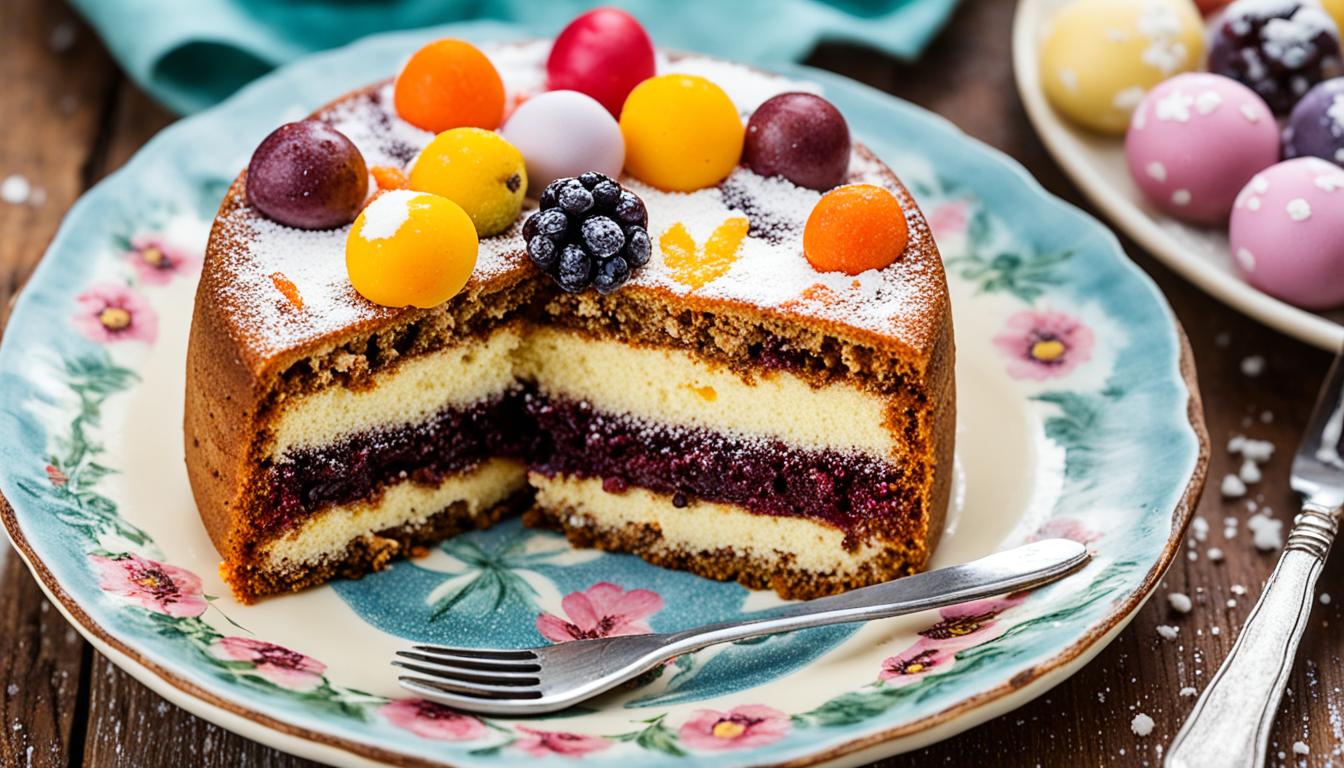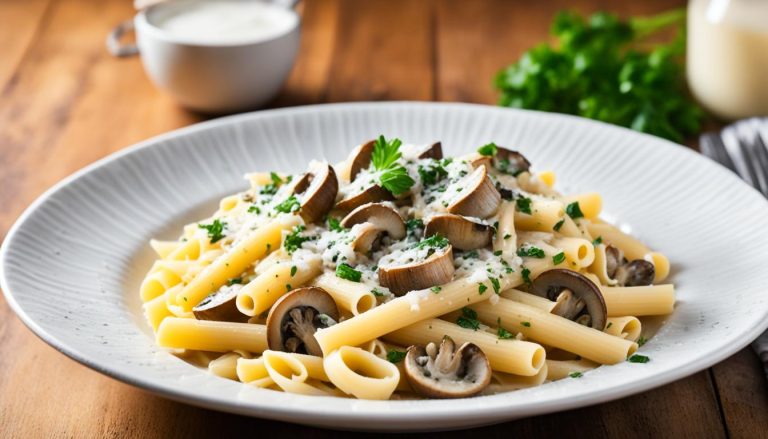As the sun peeks through the windowpane, ushering in the first signs of spring, my mind turns to the age-old traditions that make this season so special. Growing up, the arrival of Easter was always heralded by the unmistakable aroma of a freshly baked simnel cake – a rich, marzipan-filled fruitcake that has graced British tables for centuries.
The simnel cake holds a cherished place in my heart, a delectable link to the past that evokes warm memories of family gatherings and the comforting flavours of my childhood. Its layers of moist, spiced fruit cake and almond-infused marzipan are a testament to the enduring heritage of British baking, a centuries-old delicacy that has weathered the test of time.
Today, I am thrilled to share with you the secrets to crafting the perfect simnel cake – a traditional treat that will transport you back to the Middle Ages and the Tudor era, while also capturing the essence of a modern Easter celebration. Join me as we embark on a delicious journey through the history and flavours of this beloved British bake.
What is a Simnel Cake?
The simnel cake is a beloved Easter treat that has its roots in Medieval times. This delightful cake features a dense, spiced fruitcake base, with a hidden layer of creamy marzipan running through the centre. The marzipan topping is then decorated with 11 individual balls, symbolising the apostles of Jesus (excluding the betrayer, Judas).
Ingredients Required for Simnel Cake
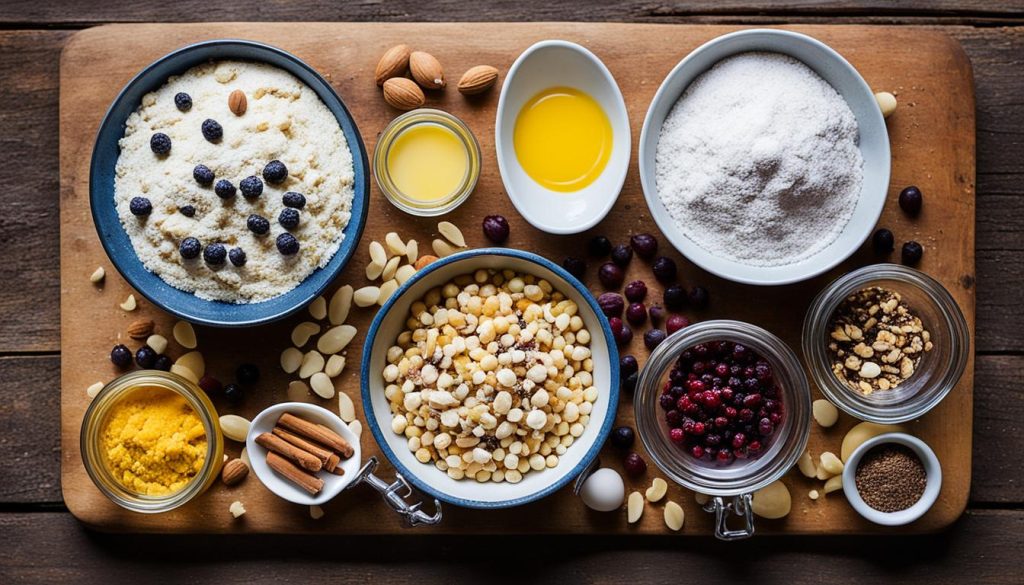
To create an authentic simnel cake, you’ll need the following ingredients:
- Mixed dried fruit (such as sultanas, currants, raisins and candied peel)
- Butter
- Sugar
- Eggs
- Flour
- Ground almonds
- Baking powder
- Mixed spice
- Vanilla extract
- Glace cherries
- Marzipan
The cake batter is assembled with the marzipan layer in the middle, then baked and decorated with the additional marzipan balls on top, creating a truly indulgent and visually stunning Easter treat.
A Brief History of the Traditional Simnel Cake
The simnel cake has a long and rich history dating back to the Medieval era. Originally, it was a type of enriched bread, but by the 13th century, it had evolved into a delectable fruit cake. Traditionally, simnel cakes were associated with Mothering Sunday, the fourth Sunday of Lent, when people would visit their “mother” church and enjoy a much-needed reprieve from the fasting of the Lenten season.
Origins Dating Back to Medieval Times
The roots of the simnel cake can be traced back to the Middle Ages, when it was a popular treat enjoyed by both the nobility and the common folk. These early simnel cakes were often made with a yeast-leavened bread dough, enriched with dried fruits, nuts, and spices, creating a satisfying and indulgent confection.
Symbolism of the Eleven Marzipan Balls
One of the most distinctive features of the traditional simnel cake is the 11 marzipan balls adorning the top of the cake. These 11 balls of almond-flavoured marzipan symbolise the 11 faithful apostles of Jesus, with Judas, the betrayer, being excluded. This symbolic representation became more prominent in the 19th century, as the association with Mothering Sunday began to wane and simnel cakes became more widely enjoyed as an Easter treat.
Step-by-Step Instructions for Making the Perfect Simnel Cake

Preparing the Marzipan
To make the perfect simnel cake, the first step is to prepare the marzipan. This can be made at home by blending together ground almonds, icing sugar, corn syrup and almond extract. The marzipan is then divided into three portions – one to be rolled into a 9-inch circle for the centre of the cake, and the remaining two for the topping.
Assembling the Simnel Cake Batter
Once the marzipan is ready, the next step is to assemble the simnel cake batter. This involves creaming together butter and sugar until light and fluffy, then gradually adding in eggs, flour, baking powder, mixed spice and vanilla extract. The dried fruits, such as sultanas, currants, raisins and candied peel, are then folded into the mixture.
Baking and Decorating the Simnel Cake
The cake batter is then poured into a prepared tin, with the circular marzipan layer placed in the centre. The cake is baked until golden brown and a skewer inserted comes out clean. Finally, the remaining marzipan is rolled into 11 small balls and placed on top of the cooled cake, representing the 11 faithful apostles. The simnel cake is then ready to be enjoyed as a traditional Easter treat.
Variations and Serving Suggestions
While the classic simnel cake recipe remains quite consistent, there are some regional variations that have developed over the centuries. The Shrewsbury simnel cake, for example, was famously hard and was sometimes even boiled to soften it, while the Gloucester version had just a single layer of marzipan on top and was decorated differently with crystallised fruits. The Bury simnel cake came to dominate in the Victorian era, featuring a richer fruit cake with nuts, cherries and peel.
Accompaniments and Serving Ideas
Simnel cake is traditionally enjoyed on its own as a delightful Easter treat, but it can also be served with a range of accompaniments to enhance the flavour. A classic pairing is a dollop of clotted cream, which complements the dense, moist texture of the cake.
Custard or brandy butter are also popular options, adding a creamy, indulgent element. For a lighter touch, a dusting of icing sugar or a drizzle of honey can elevate the cake’s sweetness.
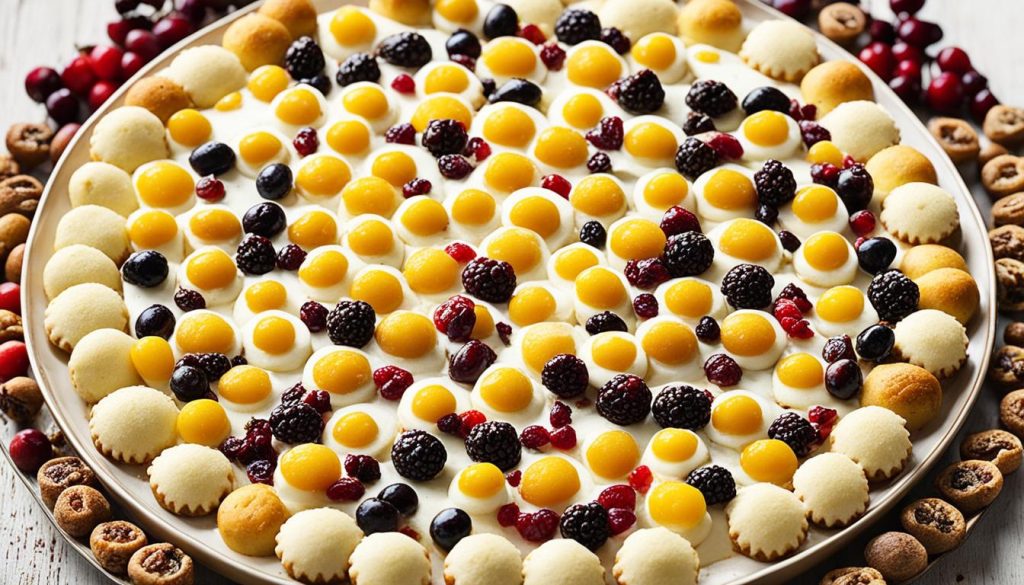
Nutritional Information and Preparation Time
A slice of homemade simnel cake contains approximately 300 calories, with the majority coming from the dried fruits, butter and marzipan. It provides a good source of energy from the carbohydrates, as well as small amounts of protein from the eggs and almonds.
| Nutritional Information (per slice) | Amount |
|---|---|
| Calories | 300 |
| Carbohydrates | 40g |
| Protein | 5g |
| Fat | 15g |
| Fibre | 3g |
The preparation time for the simnel cake recipe is approximately 2 hours, which includes making the marzipan, assembling the cake batter and baking. The active hands-on time is around 30 minutes, with the remaining time needed for the cake to bake and cool.
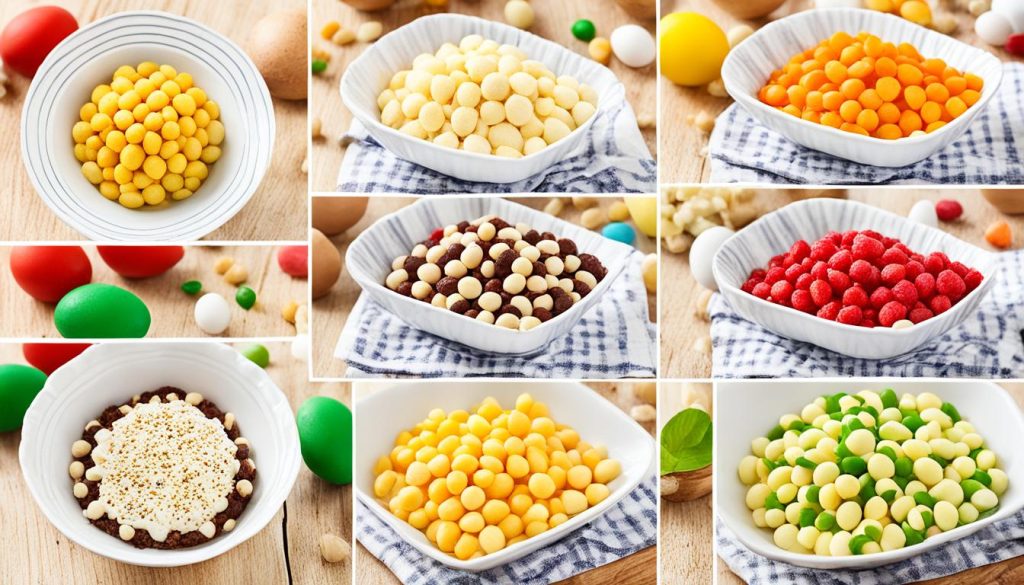
Conclusion
The traditional simnel cake is a delightful Easter treat with a rich history dating back to Medieval times. With its layers of marzipan and spiced fruit cake, it’s the perfect centrepiece for an Easter celebration. By following the step-by-step instructions, home bakers can create their own version of this centuries-old British delicacy, complete with the symbolic 11 marzipan balls.
Whether enjoyed on its own or with classic accompaniments like clotted cream, simnel cake is a true taste of Easter tradition. Its unique blend of flavours and textures, combined with the cultural significance of its origins, make it a beloved part of the British Easter celebration. Indulging in a slice of this timeless treat is a wonderful way to connect with the country’s rich culinary heritage and embrace the spirit of the season.
So why not try your hand at baking a delicious simnel cake this Easter? With a little effort and the right recipe, you can recreate this beloved British classic in your own kitchen, and share the joy of this centuries-old tradition with family and friends.
FAQs
What is a simnel cake?
A simnel cake is a type of rich fruitcake that is traditionally eaten at Easter in the UK. It is characterised by a layer of almond-flavoured marzipan baked into the centre of the cake, as well as a topping of 11 marzipan balls representing the 11 faithful apostles (excluding Judas).
What are the key ingredients in a simnel cake?
The ingredients required for a simnel cake include mixed dried fruit (such as sultanas, currants, raisins and candied peel), butter, sugar, eggs, flour, ground almonds, baking powder, mixed spice, vanilla extract, glace cherries, and marzipan.
What is the history behind the simnel cake?
The simnel cake has a long history dating back to Medieval times. It was originally a type of enriched bread, but by the 13th century it had evolved into a fruit cake. Traditionally, simnel cakes were associated with Mothering Sunday, the fourth Sunday of Lent, when people would visit their “mother” church and enjoy a reprieve from Lenten fasting.
What is the significance of the 11 marzipan balls on a simnel cake?
The 11 marzipan balls on top of the cake symbolise the 11 faithful apostles of Jesus, with Judas, the traitor, being excluded. This symbolism became more prominent in the 19th century as the association with Mothering Sunday declined and simnel cakes became more widely eaten at Easter instead.
How do you make homemade marzipan for a simnel cake?
To make the marzipan, you need to blend together ground almonds, icing sugar, corn syrup and almond extract. The marzipan is then divided into three portions – one to be rolled into a 9-inch circle for the centre of the cake, and the remaining two for the topping.
Are there any regional variations of the simnel cake?
Yes, there are some regional variations that have developed over the centuries. For example, the Shrewsbury simnel cake was famously hard and was sometimes even boiled to soften it, while the Gloucester version had just a single layer of marzipan on top and was decorated differently with crystallised fruits. The Bury simnel cake came to dominate in the Victorian era, featuring a richer fruit cake with nuts, cherries and peel.
What are some typical accompaniments or serving suggestions for simnel cake?
Simnel cake is often enjoyed on its own, but it can also be served with classic accompaniments like clotted cream. It can also be enjoyed as part of an Easter celebration or alongside a cup of tea.
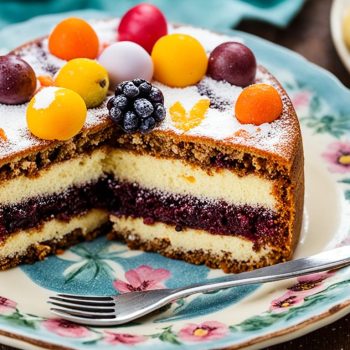
Simnel Cake Recipe
Ingredients
- Mixed dried fruit such as sultanas, currants, raisins and candied peel
- Butter
- Sugar
- Eggs
- Flour
- Ground almonds
- Baking powder
- Mixed spice
- Vanilla extract
- Glace cherries
- Marzipan
Instructions
- In a mixing bowl, blend together ground almonds, icing sugar, corn syrup, and almond extract to make the marzipan mixture.
- Divide the marzipan into three portions - one for the center of the cake (to be rolled into a 9-inch circle) and two for the topping.
- Cream together butter and sugar in a mixing bowl until light and fluffy.
- Gradually add eggs, flour, baking powder, mixed spice, and vanilla extract to the creamed mixture.
- Fold in dried fruits such as sultanas, currants, raisins, and candied peel into the batter.
- Preheat your oven to the specified temperature and prepare a cake tin.
- Pour the cake batter into the tin, placing the circular marzipan layer in the center of the batter.
- Bake the cake in the preheated oven until golden brown and a skewer inserted comes out clean.
- After the cake has cooled, roll the remaining marzipan into 11 small balls and place them on top of the cake to represent the 11 faithful apostles.
- Your Simnel Cake is now ready to be enjoyed as a traditional Easter treat!


